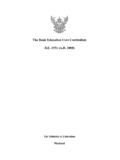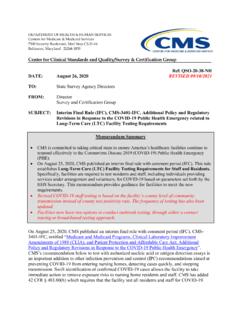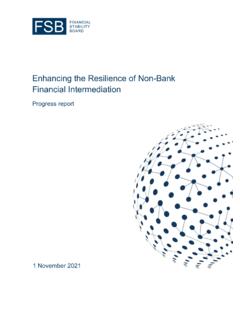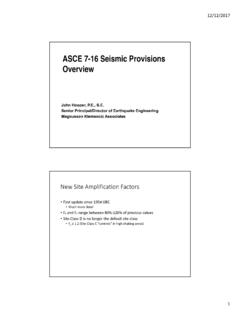Transcription of PEAK CHINA HOUSING NATIONAL BUREAU OF ECONOMIC …
1 NBER WORKING PAPER SERIES. PEAK CHINA HOUSING . Kenneth S. Rogoff Yuanchen Yang Working Paper 27697. NATIONAL BUREAU OF ECONOMIC RESEARCH. 1050 Massachusetts Avenue Cambridge, MA 02138. August 2020. The views expressed herein are those of the authors and do not necessarily reflect the views of the NATIONAL BUREAU of ECONOMIC Research. NBER working papers are circulated for discussion and comment purposes. They have not been peer-reviewed or been subject to the review by the NBER Board of Directors that accompanies official NBER publications. 2020 by Kenneth S. Rogoff and Yuanchen Yang. All rights reserved. Short sections of text, not to exceed two paragraphs, may be quoted without explicit permission provided that full credit, including notice, is given to the source. Peak CHINA HOUSING Kenneth S. Rogoff and Yuanchen Yang NBER Working Paper No. 27697. August 2020. JEL No. F39,G01,R3. ABSTRACT. CHINA 's real estate has been a key engine of its sustained ECONOMIC expansion.
2 This paper argues, however, that even before the Covid-19 shock, a decades-long HOUSING boom had given rise to severe price misalignments and regional supply-demand mismatches, making an adjustment both necessary and inevitable. We make use of newly available and updated data sources to analyze supply-demand conditions in the fast-moving Chinese economy. The imbalances are then compared to benchmarks from other economies. We conclude that the sector is quite vulnerable to a sustained aggregate growth shock, such as Covid-19 might pose. In our baseline calibration, using input-output tables and taking account of the very large footprint of HOUSING construction and real-estate related sectors, the adjustment to a decline in HOUSING activity can easily trim a cumulative 5-10 percent from the level of output (over a period of years). Kenneth S. Rogoff Thomas D Cabot Professor of Public Policy Economics Department Harvard University Littauer Center 216.
3 Cambridge, MA 02138-3001. and NBER. Yuanchen Yang PBC School of Finance Tsinghua University 43 Chengfu Road, Haidian District Beijing 100083. CHINA I. Introduction It has long been argued that despite CHINA 's truly epic real estate boom over the past three decades (as documented in a number of previous papers),3 the central government's ability to tightly monitor the financial system, and to resolve insolvencies quickly in the event of a crisis, makes it relatively immune to conventional HOUSING -related financial crises. At the same time, however, this view has been largely untested thanks to the country's extraordinary growth performance, with expectations of further fast growth underpinning ever higher HOUSING prices. How much of a vulnerability might the real estate sector prove in the wake of the Covid-19 shock? This paper's contribution is threefold. First, we make use of newly available sources, to extend and significantly update earlier work on the size and scale of CHINA 's HOUSING market.
4 We especially take advantage of the digitization of CHINA 's statistics, which has helped provide both more extensive and more accurate data. Fang et al. (2015) document HOUSING price growth in major Chinese cities from 2003 to 2013, while Glaeser et al. (2017) track changes in CHINA 's construction square footage, household vacancy rates, etc. from 2002 to 2012. We find that significant changes, even before the Covid-19 pandemic, have taken place since. During 2013-2018, for example, real estate investment increased by 30% and household leverage ratio rose from 33% to 60%. Another important factor is that CHINA underwent a major change of leadership in 2013, and that has heavily influenced the country's real estate policies. Thus, using data (some of which runs through 2020) gives a significantly more accurate picture of CHINA 's rapidly-evolving HOUSING market. 3. See, for example, Fang et al. (2015), Chivakul et al. (2015), Glaeser et al.
5 (2017), and Koss and Shi (2018). 2. Second, we provide a quantitative characterization of the upstream and downstream contribution to GDP of CHINA 's real estate sector by exploiting newer input-output tables. Our updated measure, based on cross-industry correlations derived from CHINA 's most recent input-output matrix, and taking into account higher-order effects (in addition to first-order) is 29%, even higher than in earlier Real estate activity involves both the production of property and the provision of services related to property. The former refers to building, renovating, repairing and maintaining of property, while the latter includes buying, selling, renting and managing of In addition, real estate is closely linked to an array of industries through the supply chain. To complete a real estate project, various inputs are needed, including intermediate inputs, such as steel and concrete, from the manufacturing sector, labor input from the construction sector, capital input from the banking sector, etc.
6 Hence to estimate the sum effect of real estate on the economy, we consider not only the output of real estate sector alone, but also the output share of closely related industries. Using the input-output table, we find that a 20% fall in real estate activity could lead to a 5-10% fall in GDP, even without amplification from a banking crisis, or accounting for the importance of real estate as collateral. Third, we present a substantial body of evidence from the last 20 years using a variety of Chinese and international datasets that strongly suggests the existence of a HOUSING bubble in CHINA . Extant literature has largely concentrated on CHINA alone (Fang et al., 2015; Ding et 4. Previous studies using narrower measures of HOUSING 's impact typically put the size of the sector around 16% ( , Glaeser et al (2017), Liu and Xiong (2018)). Our measure is closest in spirit to Cook et. al. (2018) who use an earlier (2012). input output table and arrive at a 22% contribution of HOUSING .)
7 See the Technical Appendix. 5. According to the International Standard Industrial Classification (the SIC codes), real estate is classified as a tertiary industry, encompassing only the provision of property-related services, which is merely part of HOUSING activity. 3. al., 2017), with a few papers drawing comparison with the United States ( Glaeser et al., 2017). We take a cross-country perspective, starting with classic HOUSING booms from advanced economies while zooming in on CHINA 's current boom, to enable comparison on a global scale. Despite the repeated argument that CHINA is different, we note that it shares striking similarities with other boom episodes in the run-up of HOUSING prices, the scale of the construction sector, the debt accumulation etc. Indeed, given the severity of many ECONOMIC indicators, CHINA 's decades-long HOUSING boom shows many signs of having hit a potentially precarious The structure of the paper proceeds as follows.
8 Section II briefly reviews the most closely-related literature. Section III presents recent developments of CHINA 's HOUSING market up to the Covid-19 pandemic (though we include some very recent 2020 data just before the conclusions.) Section IV analyzes HOUSING supply-demand dynamics. Section V examines real estate's linkage to the economy and its resilience to the Covid-19 stress. Section VI. concludes. Appendices provide data description and technical details. II. The literature The most closely-related studies to ours include earlier papers such as Fang et al. (2015), Chivakul et al. (2015), Glaeser et al. (2017), and Koss and Shi (2018). Using data ending in 2013, 2014, 2012 and 2016 respectively, all of these papers explore the unique features 6. A considerable body of research has shown that HOUSING sector is closely linked to business cycles (Leamer, 2007; 2015), Mian, Sufi and Verner (2017) and to post World War II financial crises (Reinhart and Rogoff, 2009; Jorda, Schularick and Taylor, 2016).
9 4. characterizing CHINA 's HOUSING market, and, like ours, analyze the possibility and macroeconomic severity of potential bubble bursts. Employing detailed information on the profile of mortgage borrowers, Fang et al. (2015). find that HOUSING price appreciation is largely matched by household income growth. The participation by bottom-income mortgage borrowers in the HOUSING market remains steady despite onerous financial burdens, and their mortgage loans are protected by down payments usually in excess of 35%. Therefore, an imminent financial crisis triggered by the HOUSING market is unlikely to happen in CHINA . Chivakul et al. (2015) identify CHINA 's HOUSING oversupply based on various datasets, and consider a number of scenarios to restore supply-demand balance. The paper concludes that the process of adjustment implies negative growth impacts, with the adverse effect being stronger in smaller cities, as well as cities in the northeast region.
10 Glaeser et al. (2017) examine a variety of factors that help sustain CHINA 's soaring HOUSING prices, highlighting, among other factors, the capacity and determination of the Chinese government to regulate HOUSING prices. The authors also warn about the potentially significant social costs associated with the overemphasis on HOUSING price stability, and propose the alternative solution of accommodating high levels of HOUSING construction and supply. Koss and Shi (2018) discuss the history of CHINA 's property market and then assess its resemblance to classic HOUSING bubbles. In the event of a price drop and bubble burst, the authors propose a battery of near-term policy prescriptions, ranging from the tightening of 5. mortgage requirements to the improvement of legal infrastructure, to help CHINA withstand the impact.. III. Recent Developments in the Rapidly Evolving Landscape 1. CHINA 's Real Estate Boom CHINA 's real estate market started to form in the year 1988, when major urban HOUSING reforms intended to commercialize HOUSING according to the demands of a socialist planned economy were initiated.



















